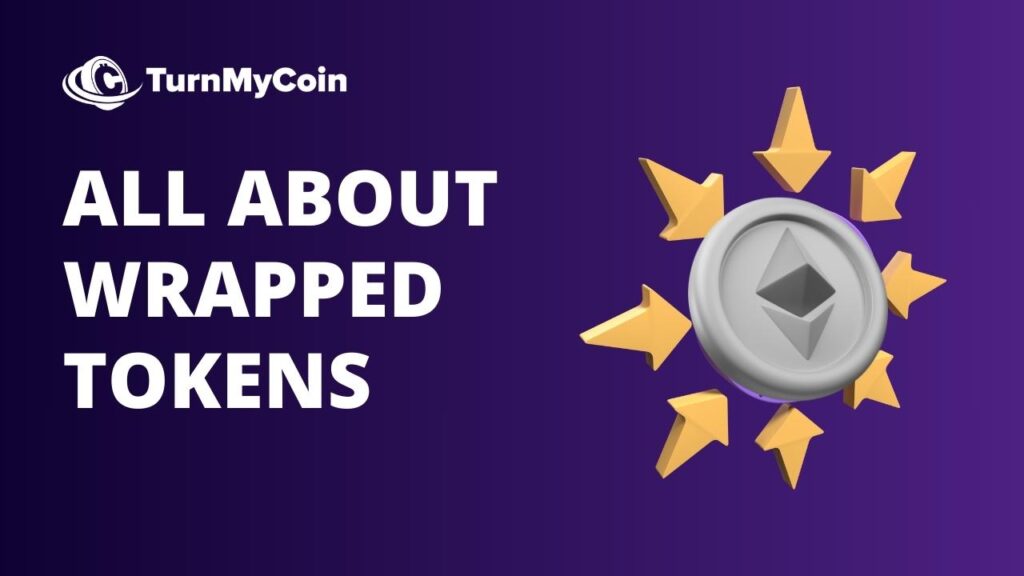![What Are Wrapped Tokens? Remarkable at Work! [2024] 1 Ellipal Titan Mini](https://turnmycoin.com/wp-content/uploads/Ellipal-Titan-Mini-300x37.jpg)
Introduction
Wrapped tokens, with a market cap of $3.13 billion, are popular in the blockchain industry. Blockchain protocols, like Ethereum, Solana, and Bitcoin, have different ecosystems due to varying consensus algorithms.
This makes communication difficult between blockchain protocols. The consensus algorithms maintain the security and independence of decentralized networks, but hinder interoperability.
For instance, the DeFi industry needs smooth and fast fund movement throughout the decentralized financial chain. Wrapped tokens provide the solution. Interoperability is not a problem for advanced blockchains like Polkadot and Algorand.
But for first- and second-generation blockchains, cross-chain transactions and communication can be challenging. Wrapped tokens enable seamless transactions and interaction between chains like Bitcoin and Ethereum.
![What Are Wrapped Tokens? Remarkable at Work! [2024] 2 Ellipal Titan Mini](https://turnmycoin.com/wp-content/uploads/Ellipal-Titan-Mini.jpg)
In this article, we will explain what wrapped tokens are and how they work. We will also provide a list of some of the most popular wrapped tokens in the market.
What are Wrapped tokens?
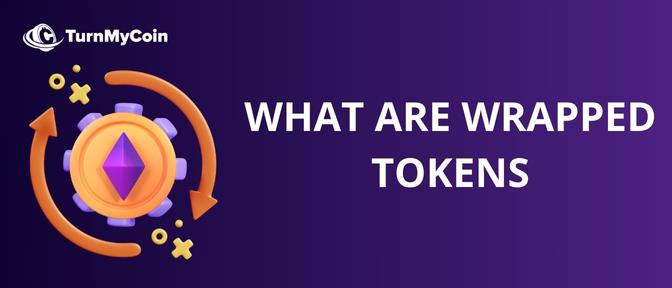
Wrapped tokens are digital assets that allow seamless interoperability between different blockchain ecosystems. They work by representing a specific token on one blockchain on another blockchain, enabling cross-chain transactions and communication. Wrapped tokens are an innovative solution to the problem of compatibility between different blockchain protocols. With the increasing number of blockchain networks in use today. It has become challenging to facilitate transactions and communication between different blockchains.
This is where wrapped tokens come in, providing a bridge between different blockchain networks. They are a form of tokenization, which is the process of representing a real-world asset as a token on a blockchain. By creating wrapped tokens, users can enjoy the benefits of different blockchain protocols without being limited by the limitations of each individual blockchain.
What are the Components of Wrapped Tokens?
To understand wrapped tokens, it’s essential to know the components that make them up.
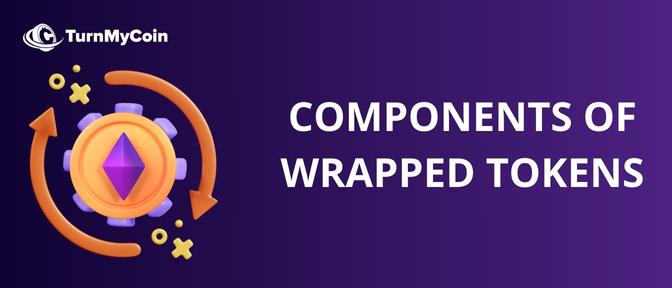
An Underlying Asset
The first component is the underlying asset. The underlying asset is the real-world asset that is being represented as a token on the blockchain. This can be anything from physical commodities such as gold or real estate, to digital assets like cryptocurrencies. The underlying asset provides the value and security behind the wrapped token.
Smart Contract
The second component of it is the smart contract. A smart contract is a self-executing contract with the terms of the agreement between buyer and seller being directly written into code. In the case of wrapped tokens, the smart contract is responsible for managing the token issuance, transfer and redemption of the underlying asset.
Blockchain Platform
The third component is the blockchain platform. A blockchain platform is a decentralized ledger that records transactions on multiple computers, making it virtually impossible to alter the data stored in the ledger. The blockchain platform provides the infrastructure for the creation and management of wrapped tokens.
![What Are Wrapped Tokens? Remarkable at Work! [2024] 2 Ellipal Titan Mini](https://turnmycoin.com/wp-content/uploads/Ellipal-Titan-Mini.jpg)
Token Standard
The fourth component of is the token standard. A token standard is a set of rules that define how a token should function and interact with other tokens and the blockchain platform. The most commonly used token standards for wrapped tokens are the Ethereum Token Standard (ERC-20) and the Interledger Protocol (ILP).
Digital Asset Exchange
The final component of is the digital asset exchange. A digital asset exchange is a platform where users can buy, sell, and trade wrapped tokens. The exchange acts as a bridge between the wrapped token and the underlying asset, enabling users to trade the wrapped token as if it were the underlying asset itself.
How do Wrapped Tokens Work?
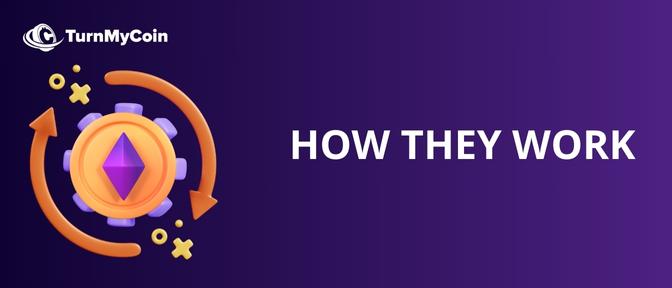
They are digital assets that allow for interoperability between different blockchain ecosystems, enabling cross-chain transactions and communication. But how exactly do they work?
To start, It is created by tokenizing a real-world asset and representing it on a blockchain network. This is done through the use of a smart contract, which is a self-executing contract with the terms of the agreement between the buyer and seller being directly written into code. The smart contract is responsible for managing the token issuance, transfer, and redemption of the underlying asset.
The wrapped crypto is then traded on a digital asset exchange, which acts as a bridge between the wrapped token and the underlying asset. The exchange enables users to trade the wrapped token as if it were the underlying asset itself. This allows for seamless transactions and communication between different blockchain networks, regardless of their underlying consensus algorithms.
Benefits of Wrapped Tokens in DeFi?
It has become a valuable tool in the world of decentralized finance (DeFi), offering several key benefits to users.
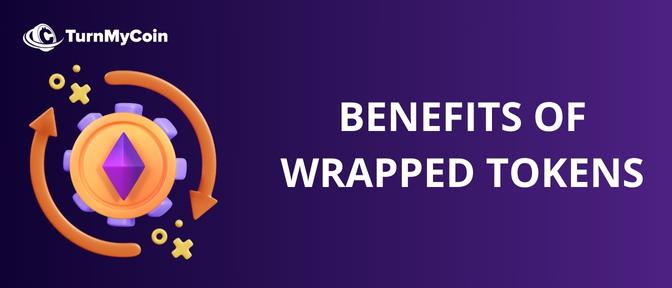
First and foremost, wrapped tokens increase accessibility. They allow for seamless interoperability between different blockchain networks. Which enables users to take advantage of the best features of each network without being limited by the limitations of each individual blockchain. This increased accessibility opens up a world of new opportunities for users, allowing them to explore and participate in a wider range of DeFi applications and services.
In addition to increased accessibility, wrapped crypto also offers improved security. By tokenizing real-world assets and representing them on a blockchain network, wrapped tokens provide a secure and transparent representation of value. This helps to reduce the risk of fraud and mismanagement, ensuring that users can trust in the value and security of their investments.
Another key benefit of wrapped crypto is increased liquidity. By enabling cross-chain transactions and communication, wrapped tokens allow users to trade and exchange value more easily, increasing the overall liquidity of the DeFi market. This increased liquidity helps to reduce volatility and provide a stable source of value, making DeFi a more attractive investment opportunity for users.
It also offer lower costs compared to traditional financial services. By removing the need for intermediaries and middlemen, wrapped tokens help to reduce the costs associated with traditional financial transactions, making DeFi more accessible and affordable for users.
Finally, they offer increased efficiency. By enabling seamless cross-chain transactions and communication, wrapped tokens help to streamline the DeFi process, reducing the time and resources required to complete transactions. This increased efficiency helps to make DeFi more accessible and user-friendly, attracting more users to the DeFi space.
Limitations of Using Wrapped Tokens
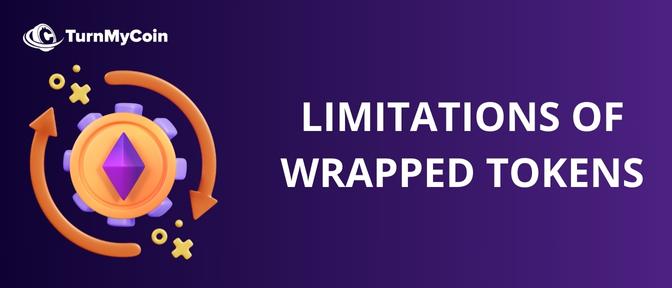
Despite its many benefits, it’s important to note that they are not without limitations. One of the main limitations of wrapped tokens is the dependency on the underlying blockchain platform. Since wrapped crypto rely on the security and stability of the underlying blockchain, any security breaches or technical issues with the platform can have a direct impact on the value and security of token.
Another limitation of wrapped crypto is the requirement for users to have a certain level of technical understanding and expertise in order to use them effectively. Wrapped tokens often involve complex cryptographic processes and smart contract operations, which can be confusing and intimidating for some users.
![What Are Wrapped Tokens? Remarkable at Work! [2024] 2 Ellipal Titan Mini](https://turnmycoin.com/wp-content/uploads/Ellipal-Titan-Mini.jpg)
Additionally, it can be subject to regulatory limitations. As different countries have different laws and regulations governing the use and trading of digital assets. This can make it difficult for users to participate in DeFi applications and services that use wrapped tokens, limiting their accessibility and adoption.
Furthermore, they are not immune to market volatility. Just like any other digital asset, wrapped tokens can be subject to price fluctuations and market forces. Which makes them a less stable form of value compared to traditional investments.
Finally, it may also be subject to liquidity limitations. As the DeFi market is still in its early stages of development and may not have the same level of liquidity as traditional financial markets. This can make it difficult for users to sell or trade wrapped tokens, leading to price volatility and reduced market efficiency.
List of Wrapped Tokens (Popular)
Here are some of the most popular wrapped tokens in the market, along with a brief overview of each:
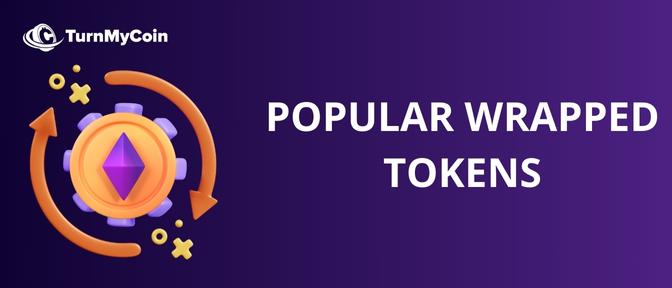
Wrapped Bitcoin (WBTC): WBTC is a token that represents the value of Bitcoin (BTC) on the Ethereum blockchain. This allows users to transfer, trade, and use Bitcoin in DeFi applications that are built on Ethereum.
Wrapped Ether (WETH): WETH is a token that represents the value of Ether (ETH) on the Ethereum blockchain. This allows users to transfer, trade, and use Ether in DeFi applications that are built on Ethereum.
Tether (USDT): Tether is a stablecoin that is pegged to the value of the US dollar. This allows users to transact with a stable, US dollar-denominated token in the DeFi space, reducing the volatility and risk that is associated with other cryptocurrencies.
DAI: DAI is a stablecoin that is pegged to the value of the US dollar. Unlike other stablecoins, DAI is decentralised and is created through a series of smart contracts on the Ethereum blockchain.
![What Are Wrapped Tokens? Remarkable at Work! [2024] 2 Ellipal Titan Mini](https://turnmycoin.com/wp-content/uploads/Ellipal-Titan-Mini.jpg)
Binance USD (BUSD): Binance USD is a stablecoin that is pegged to the value of the US dollar. This token is issued by Binance, one of the largest cryptocurrency exchanges in the world.
TrueUSD (TUSD): TrueUSD is a stablecoin that is pegged to the value of the US dollar. This token is designed to be a transparent, reliable, and trusted form of stable value in the DeFi space.
Conclusion
They play a crucial role in the growing DeFi industry by enabling seamless cross-chain transactions and communication. By wrapping an underlying asset in a smart contract and hosting it on a blockchain platform, it allow users to transact with familiar assets in a decentralized environment.
With the benefits of increased accessibility, improved security, increased liquidity, lower costs, and increased efficiency, it has become a popular choice for users in the DeFi space. However, it’s important to remember that it also have limitations. Users should always do their due diligence and thoroughly understand the underlying asset and its risks before investing in any wrapped token.
